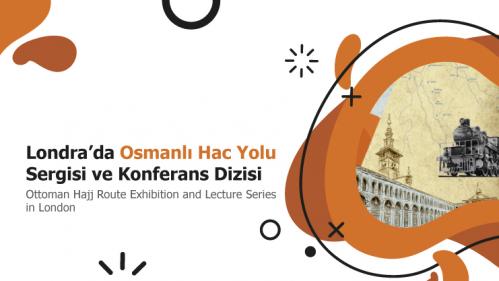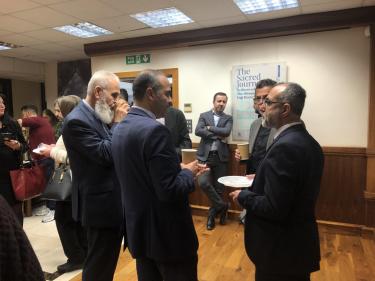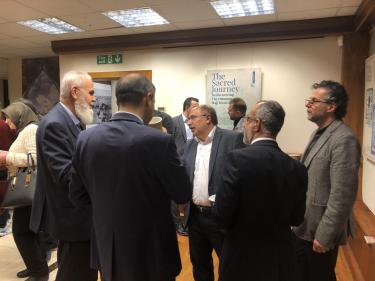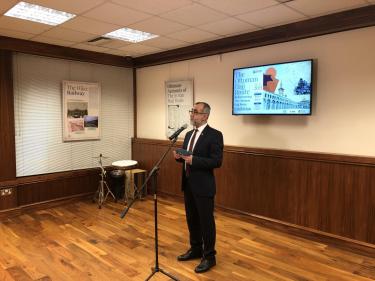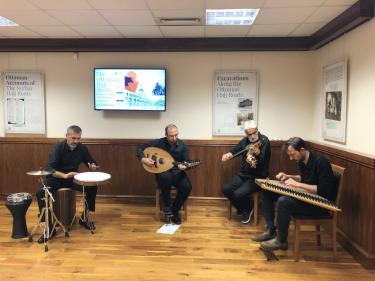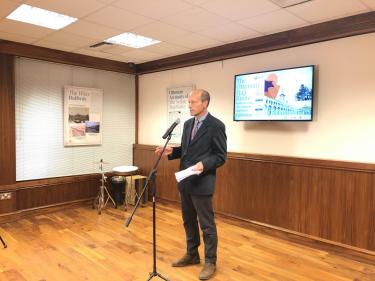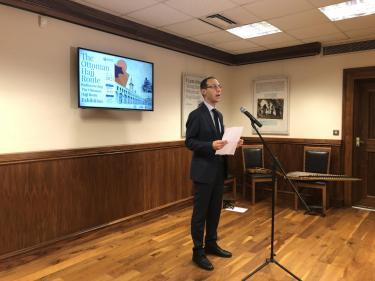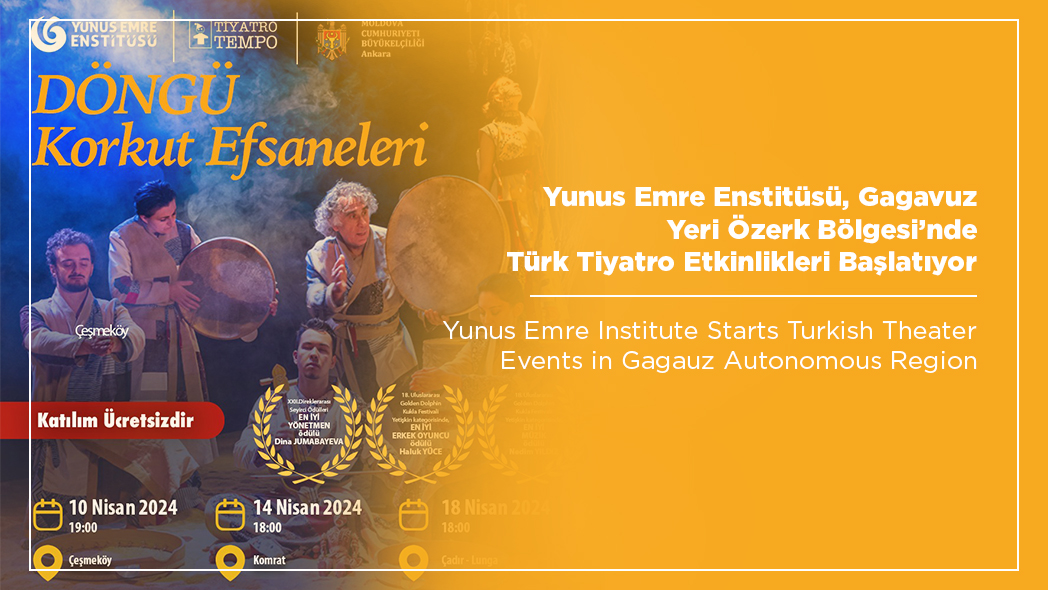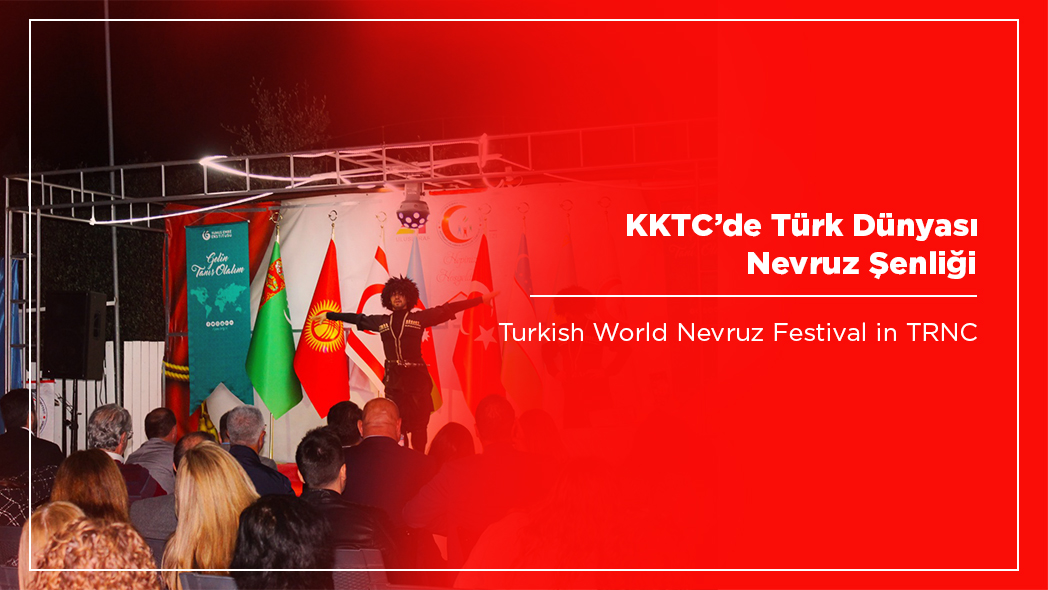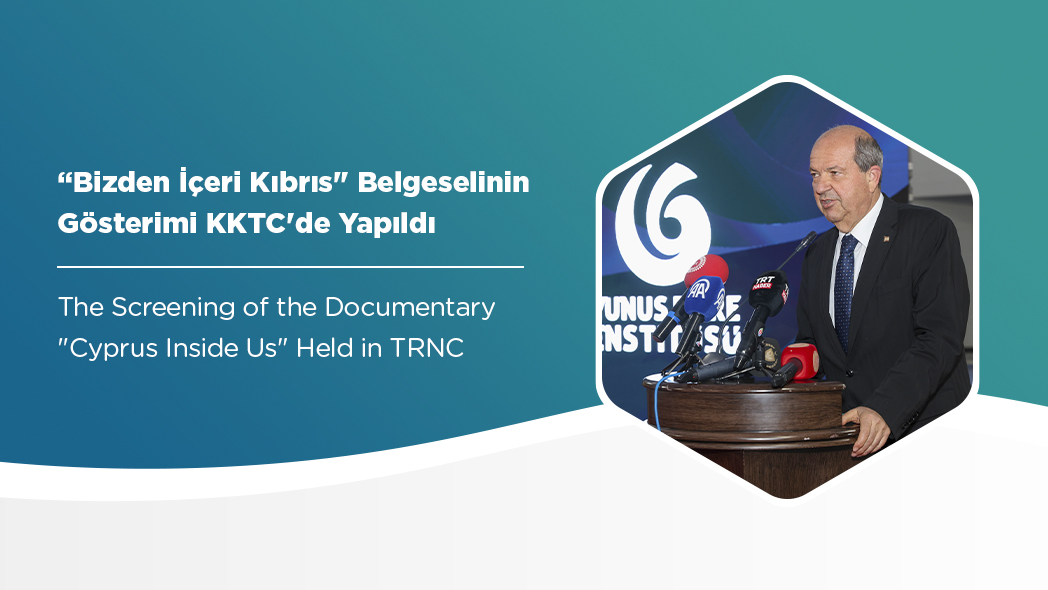Ottoman Hajj Route Exhibition and Lecture Series in London
London Yunus Emre Institute held the opening ceremony for the exhibition and lecture series program titled "Journey to the Holy Land: Rediscovery of the Ottoman Hajj Route" with many guests.
The opening ceremony of the exhibition, which included a classical Ottoman music concert and impressive speeches, was held on the night of November 18, 2021. The exhibition includes documents, photographs, maps, notes of hadjis and archaeological findings about the details of the Hajj journeys that were carried out in the Ottoman period through sea routes and land routes with caravans.
The exhibition titled "Journey to the Holy Land: Rediscovery of the Ottoman Hajj Route" will be open for visitation at London Yunus Emre Institute between the dates of November 18 - December 17, 2021. In addition, a four-part lecture series will be held with experts of different subjects in the Hajj journey is also included within the program.
HISTORICAL HAJJ ROUTE FROM MECCA TO MEDINA
The exhibition that is supported by the University of Wales Trinity Saint David, London Central Mosque and Turkish Airlines is about the historical route and journey through Mecca, Medina, Damascus and Hejaz from the Ottoman period to today.
The Hajj pilgrimage, one of the five pillars of Islam and a fardh for every Muslim to carry out once in their lifetimes if they are able to, includes a spiritual journey for prospective pilgrims in their journey to Mecca.
This sacred land journey that lasted for months in the centuries without technology left many memories and traces about the Hajj pilgrims on its route.
THEY WERE NOT THE RULERS OF MECCA AND MEDINA BUT THEIR SERVANTS
Since the Hajj journeys lasted for months in the Ottoman period, the sultans were unable to perform their Hajj duty since they could not leave their throne for months even though they wanted to go to Hajj very much. However, throughout their four centuries of hegemony over the Holy Land, the sultans adopted the title of Hadim’ul Haremeyn eş-Şerifeyn, which means that they were not the rulers of Mecca and Medina but their servants, and competed with each other to serve such holy cities. Since they could not visit Mecca, the sultans would have their hair buried in Medina and wrote a letter to the Prophet. The Ottoman sultans also have built many monuments on the Hajj route to make the journey easier and the road safer for the Hajj caravans.
THE HAJJ ROUTE CHANGED WITH SELIM I
After the conquest of Damascus, Egypt and Hejaz by Selim I, the Hajj route changed and a caravan route that started from the Balkans and went through Istanbul, Anatolia, Damascus and Jerusalem was created. Many fountains, mosques, cisterns and caravanserais were built both on the Hajj route and the adjacent regions during the Ottoman period for the comfort and safety of the Hajj caravans and for contributing socially, culturally and economically to the people of the region. The exhibition that mapped this sacred road through the valuable photographs, notes of travelers and maps that document the meticulous archaeological studies that have been carried out by the Director of Islamic Archaeology Department from the University of Wales Trinity Saint David, Professor Andrew Petersen and his colleagues revitalizes the Ottoman Hajj route.
In his opening speech, the curator of the exhibition, Professor Andrew Petersen mentioned his inspirations when preparing the exhibition and the discoveries and findings during the archaeological excavation works that lasted for decades to unearth the history of the Hajj route during the Ottoman period. The Director of London Yunus Emre Institute Dr. Mehmet Karakuş gave a speech about the history and regions of the Ottoman Hajj route. The final speaker of the night, the Republic of Turkey's Consul General in London Utku Atahan provided his positive impressions about the exhibition and emphasized the importance of such exhibitions. During this impressive night, the quartet lead by the oud player Baha Yetkin performed a magnificent anthology from the classical Ottoman music and the guests had the chance to visit the exhibition in the company of music.
The sessions included in the four-part lecture series involves the following topics:
• Hajj Mahmals of Cairo with Professor Richard McGregor on November 25, Thursday at 18.30 - 19.30 (online)
• The Iron Camel and Its Rails: The Hejaz Railway and Its Legacy with Dr. Mehmet Tütüncü on December 2, Thursday at 18.30 - 19.30 (at London Yunus Emre Institute)
• Mecca in Bosnia: How Did the Ottoman Bosniaks Dream of the Hajj? with Dr. Dženita Karić on December 9, Thursday at 18.30 - 19.30 (at London Yunus Emre Institute)
• The Companions of the Hadjis: A Guide to Hajj at the End of the 16th Century with Yahya Nurga on December 16, Thursday at 18.30 - 19.30 (at London Yunus Emre Institute)
The free-of-charge exhibition will be open for visitation every weekday for four weeks at London Yunus Emre Institute from 10.00 to 18.00. Those want to participate in the sessions must register from the website of Eventbrite.

